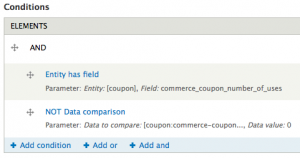July 12, 2012 - Comments Off on Adding CCK fields to Apachesolr documents in Drupal 7
Adding CCK fields to Apachesolr documents in Drupal 7
Drupal's core searching functionality is awesome in that it can be replaced by other search modules and even other search engines. We're using Apache Solr for its lightning fast response time and powerful indexing and faceting. In a nutshell, Solr is a standalone index/search engine to which Drupal sends its search queries. The real beauty is that the indexed results are all cached and served back to the Drupal site as XML documents ridiculously fast, much faster than Drupal's core search. The core search module has to hit the Database and fully load each node/entity for every matching result.
By default Apache Solr will index most of your content type's fields, however many CCK fields that you add will not be included in the default indexing. That is to say, if you add a checkbox, or text field to your content type you will have to explicitly direct Solr to add it to the index. Each piece of content that is indexed by Solr is processed and stored as a Solr document which holds all of the indexed fields as well as some Solr metadata. That is how Solr can return results so quickly, it is only sending the fields you require, not loading the entire object.
Here is some sample code showing how to add some custom fields to the Solr document. These two hooks are all you need to get started, just add them to a custom module and be sure to re-index afterwards to update the Solr index.
/**
* Implements hook_apachesolr_index_document_build().
*
* Add custom fields to the solr document
*/
function themech_solr_apachesolr_index_document_build(ApacheSolrDocument $document, $entity, $entity_type, $env_id) {
if($entity->type == 'publication') {
if (isset($entity->field_publication_author[$entity->language])) {
foreach($entity->field_publication_author[$entity->language] AS $id => $obj) {
if(isset($entity->field_publication_author[$entity->language][$id])) {
$document->setMultiValue('sm_field_publication_author', $entity->field_publication_author[$entity->language][$id]['entity']->name);
}
}
}
if(isset($entity->field_publication_attachment[$entity->language])) {
foreach($entity->field_publication_attachment[$entity->language] AS $id => $obj) {
$document->setMultiValue('sm_field_publication_attachment', $entity->field_publication_attachment[$entity->language][$id]['uri']);
}
}
if(isset($entity->field_publication_recommended[$entity->language])) {
$document->setMultiValue('is_field_publication_recommended', $entity->field_publication_recommended[$entity->language][0]['value']);
}
}
}
/**
* Implementation of hook_apachesolr_query_alter($query)
*
* Add the newly indexed fields from above to the query result.
*/
function themech_solr_apachesolr_query_alter($query) {
$query->addParams(array('fl' => array('sm_field_publication_author')));
$query->addParams(array('fl' => array('sm_field_publication_attachment')));
$query->addParams(array('fl' => array('sm_field_publication_recommended')));
}
In this example, we're adding any names that were selected in a selectlist of authors, a checkbox state, and a file attachment uri. The first function checks to see if the Publication node has data in certain fields then adds them to the $document object via SetMultiValue(). The fields are now stored in Solr, but as they were custom additions to the document, you have to specify them in the query to tell Solr to pull them back out with the rest of the document.
You can index anything you can put into a content type, and each content type can have specific fields indexed. With Solr you can create thumbnail gallery search results, or integrate with your commerce site to generate product category and price range searches, as well as tune the results based on custom weights and ratings. The possibilities are almost limitless. Maybe as many as a googol (1x10^100), or in Drupal terms... a Droogol. :+)
Links:
Apache Solr
Apachesolr Search Integration
Published by: chazcheadle in The Programming Mechanism
Tags: Apache, drupal, Sunspot Solr


